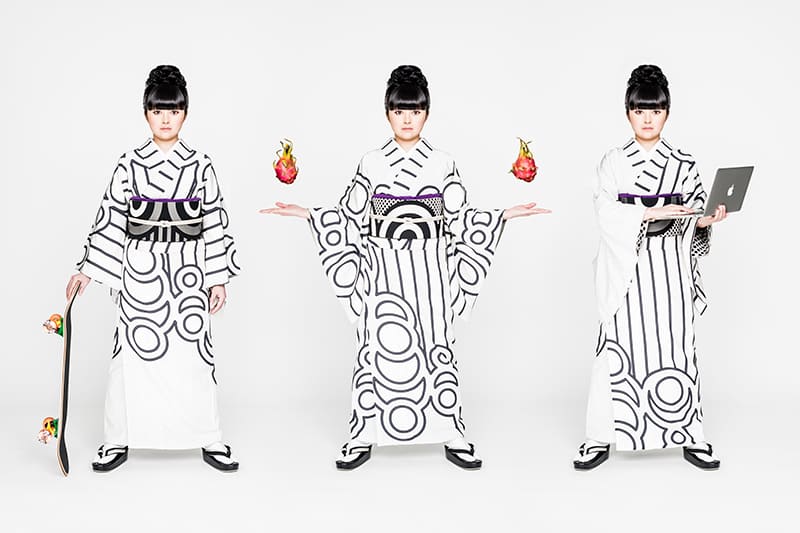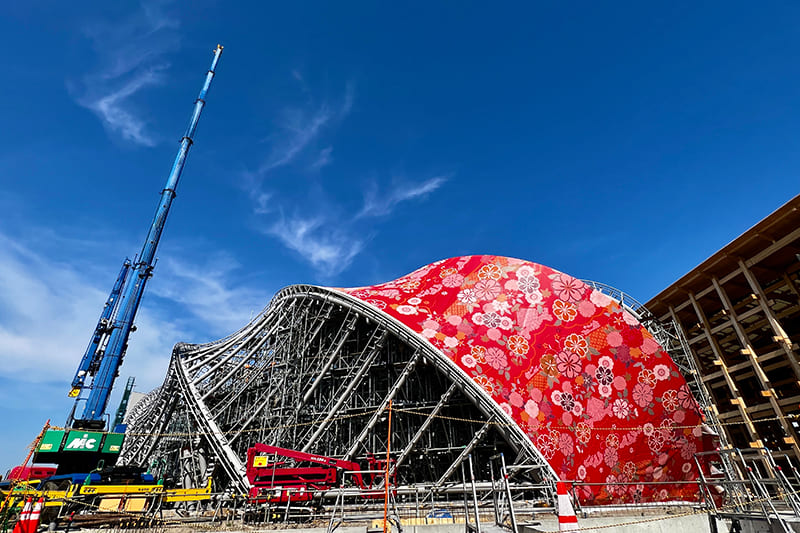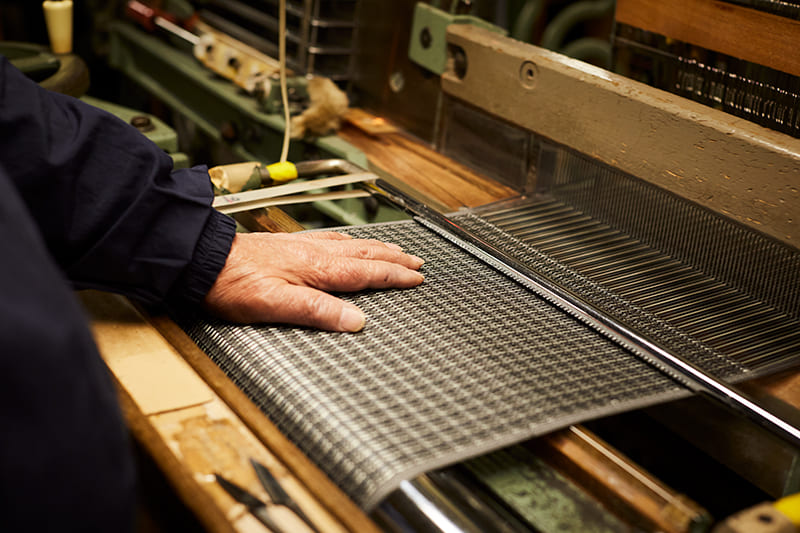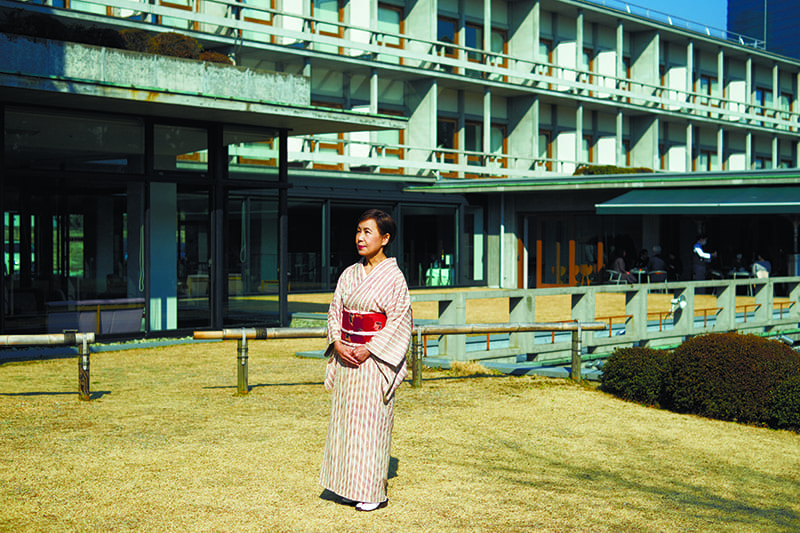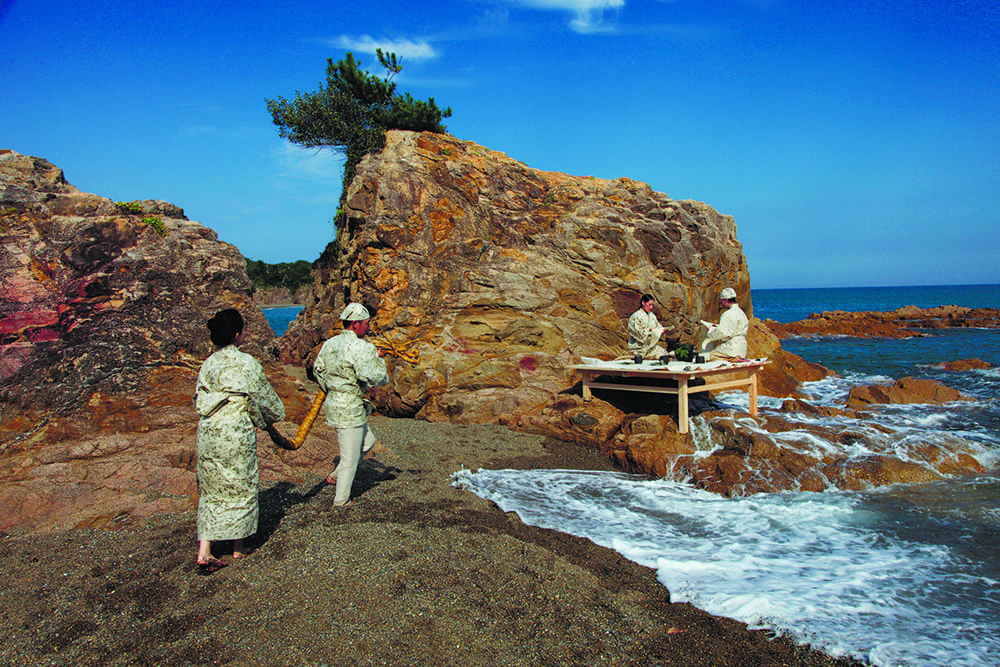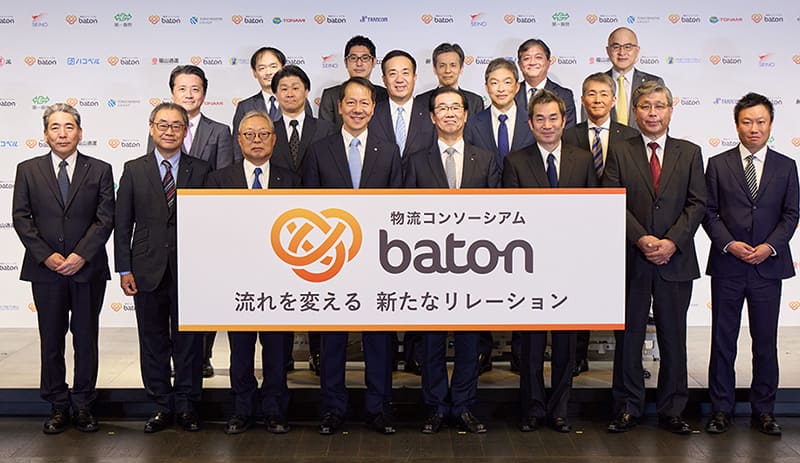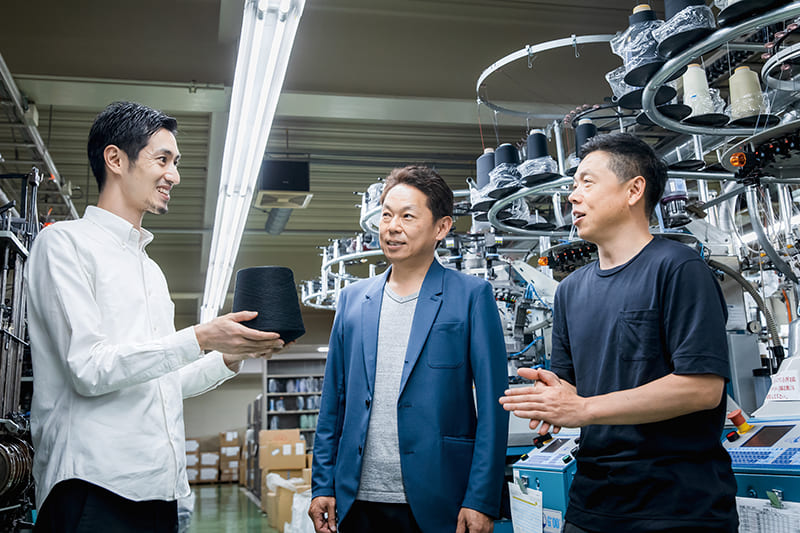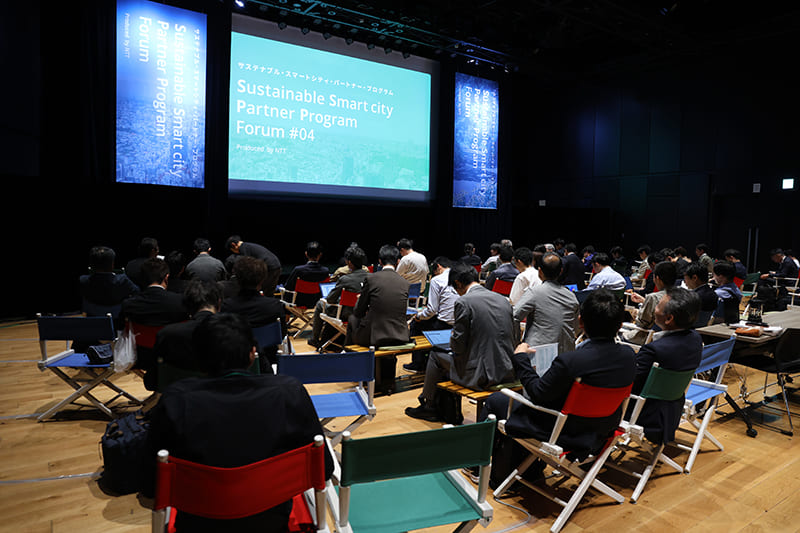September 27, 2024
Creating the future of traditional Japanese textiles
INTERVIEW
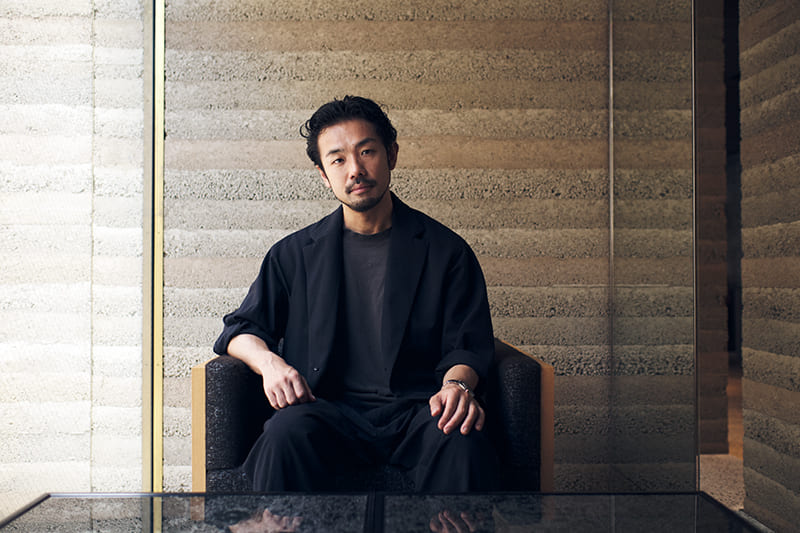
Nishijin brocade, produced in Kyoto’s Nishijin area, is a high-end silk textile with a history dating back around 1,200 years. It is mainly used for obi sashes, but Japan’s domestic kimono market has declined significantly since the postwar popularization of Western-style clothing, falling over the past 40 years from ¥1.8 trillion to ¥224 billion ($12.5 billion to $1.5 billion), according to Kimono Industry 2024, published by the Yano Research Institute.
As a result, the market for Nishijin textiles is now just one-tenth of its past size. One Nishijin textile company, Hosoo, founded in Kyoto in 1688, has been attracting attention by finding applications for its fabrics outside of kimonos, even doing collaborations with international luxury brands. The backstory of this impressive reinvention was first published in 2018 as a case study titled “Innovating Tradition at Hosoo” by Harvard Business Publishing (a wholly owned subsidiary of Harvard University). The key figure in that breakthrough was Masataka Hosoo, the 12th-generation president of the company.
In 2006 the company, then headed by his father, was looking to broaden its sales channels overseas. It exhibited a sofa made using Nishijin brocade at Maison & Objet, an interior and design exhibition in Paris that attracts 100,000 visitors from around the world, but received no orders. The following year, it launched a cushion, which received some orders but not enough to be called a success.
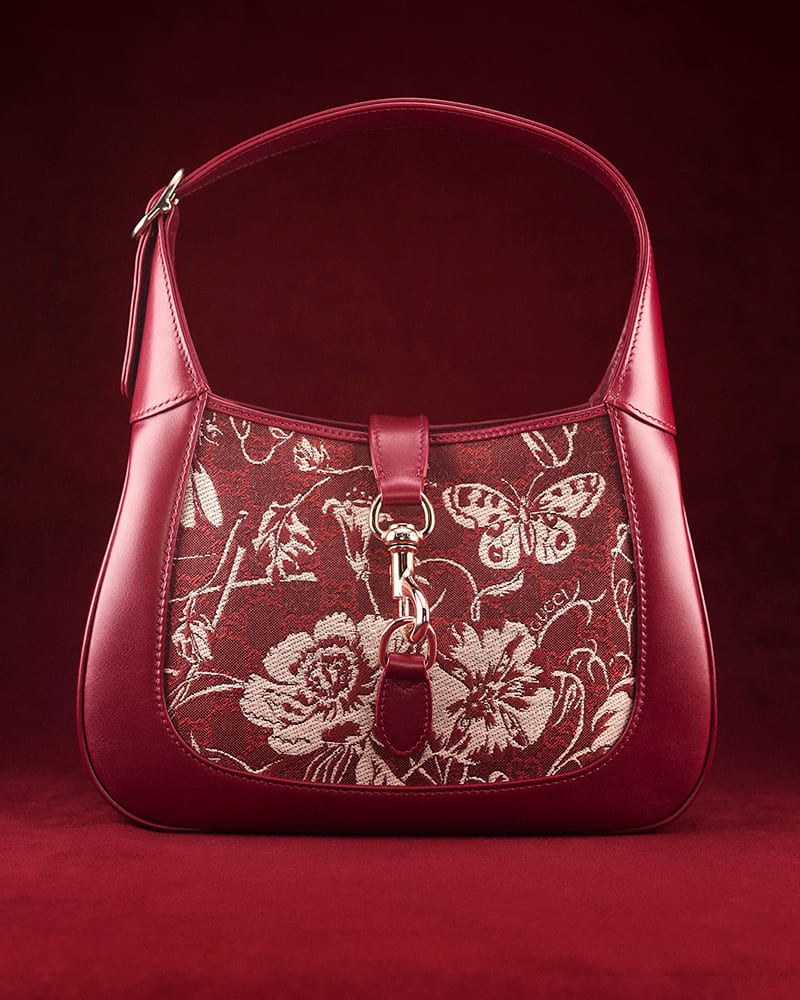
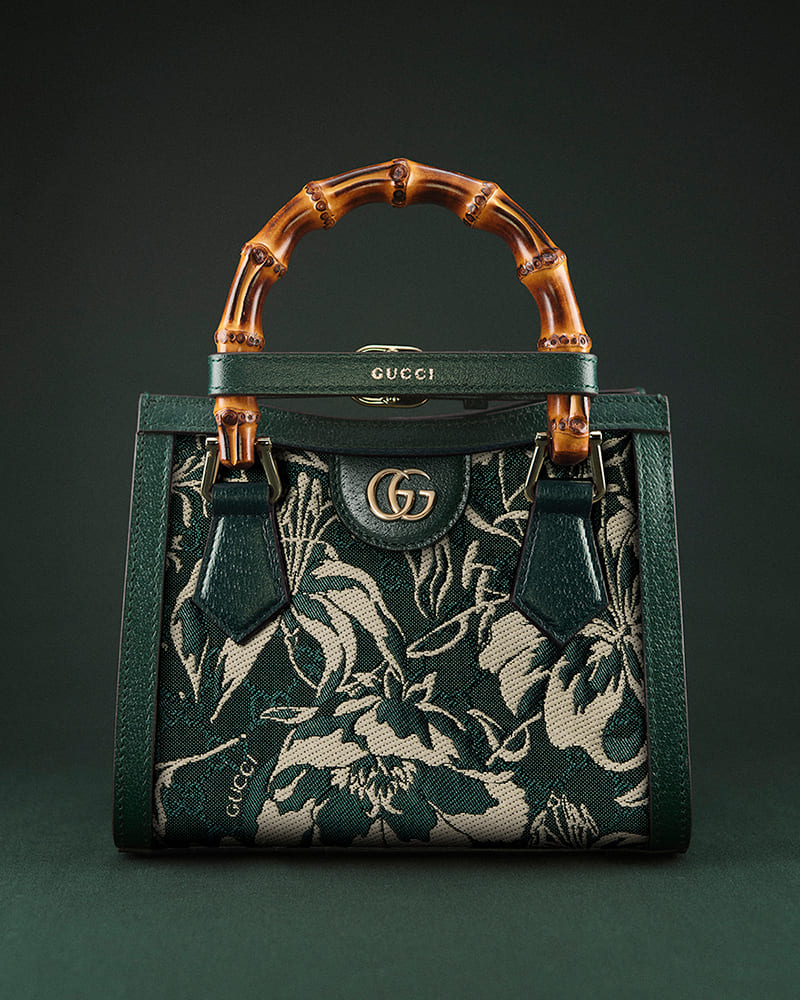
Launched in September, this bag was the result of Hosoo’s third collaboration with the Italian luxury brand Gucci. Using Hosoo’s textile technique, motifs such as flowers and dragonflies are delicately reproduced with advanced craftsmanship. A special foil for Nishijin brocade is woven into the multilayered fabric to create an elegant finish that changes depending on the angle.
COURTESY: GUCCI
Despite these difficulties, the younger Hosoo, who had learned the basics of business during time spent in the music industry and at a jewelry manufacturer, still believed Nishijin textiles had international potential. He joined Hosoo in 2008 and, as the person in charge of overseas business, exhibited at the Salone del Mobile furniture fair in Milan and other large-scale trade fairs around the world. In the midst of all this, two obis he exhibited in the “Kansei: Japan Design Exhibition,” which toured to New York in 2009 after showing in Paris that February, caught the eye of the well-known architect Peter Marino.
“We were told they wanted to use Nishijin brocade in the interiors of every Dior store in the world. But they didn’t want a Japanese-style pattern. They wanted an abstract pattern made using the traditional Nishijin techniques and materials. I had always thought that to compete overseas we would need to differentiate our products by using Japanese-style patterns, and that we couldn’t do that with products like sofas and cushions. But he wanted the Nishijin techniques and materials, and that was an epiphany for me,” explained Hosoo.
Nishijin brocade is a yarn-dyed fabric whose history can be traced back to the sixth century, when Chinese and Korean migrants brought sericulture and silk-weaving techniques to what is now Kyoto. As it developed, it came to serve a clientele of emperors, shoguns, shrines and temples. Currently, 12 varieties of Nishijin brocade are designated by law, including semitransparent silks such as ro gauze and lightweight ra, as well as double-layered fūtsū weaving. Although India and China have also produced luxurious brocades, Nishijin is the only place in the world that can produce textiles that incorporate gold or silver foil, mother-of-pearl and lacquer, made by attaching them to washi paper, cutting it into small pieces and weaving them into the fabric.
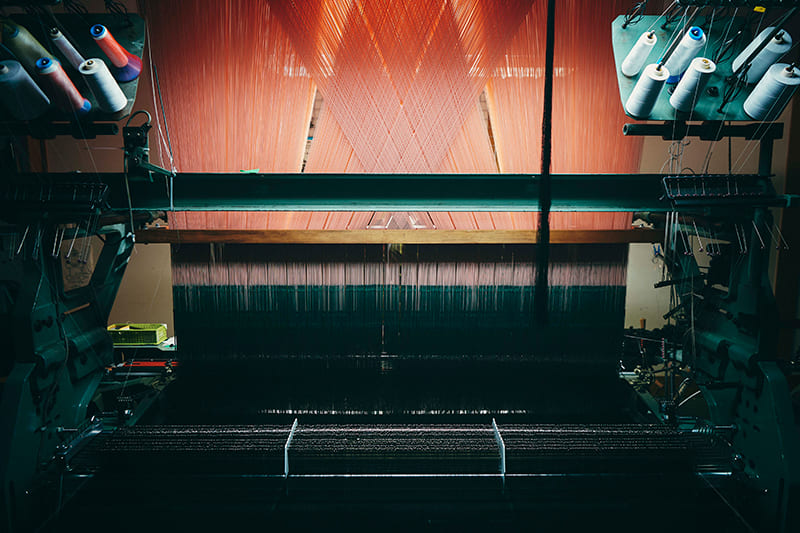
© HOSOO
“Even if you’re using the same gold, a twisted brocade thread will give off a bright reflection. But foil strips give off a surface reflection, so there is an elegance to them. Marino seemed to like that,” Hosoo said.
However, there was a problem. Conventional Nishijin looms could only weave fabrics 32 centimeters in width. To meet Marino’s request, the company needed to produce 150-cm-wide fabrics, a standard width internationally. Although the company was already losing money on its overseas business, Hosoo was determined to deliver, and after a year of trial and error, he developed a 150-cm loom with the approval of his father, the company president.
Today, the company’s Nishijin textiles are used in 100 Dior stores in 100 cities; 60 Chanel stores; Hermes, Cartier and Van Cleef & Arpels stores; and in the interior of some restaurants at the Ritz-Carlton hotel. In addition, while it had long been considered impossible to use Nishijin brocade in car upholstery, Hosoo successfully collaborated with an automotive materials manufacturer to produce a brocade with fire-resistant foil woven into it, which was used in the new Toyota Lexus LS in 2020. With these new products being released, the ratio of the company’s nonkimono sales to kimono sales has grown closer, and is now at 4:6. They are aiming for a 50:50 split in the future.
Today, Masataka Hosoo’s efforts are diverse. While taking on new challenges, such as collaborations with artists, he also focuses on preserving and passing on traditional kimono and textile culture. While also involved in the wholesaling of obis and kimonos, he has established a research and development center called Hosoo Studies, which conducts fieldwork in areas that make dyed and woven products across Japan, as well as research on ancient dyeing, hemp fabrics, designs, silkworm farming and more. In addition, the company launched its own collections of fashion and interior design in 2019, broadening its offerings to lifestyle in general. The company’s goal is to become a top global brand with traditional Japanese crafts at its core. Hosoo said, “Craft is the desire to create beautiful things.” His message is that by maintaining a focus on beauty and technique — and not necessarily in relation to kimonos alone — traditional crafts will live on.


The interior of Lexus’ flagship sedan, the LS, now features upholstery fabric developed especially by Hosoo.
COURTESY: HOSOO
MASATAKA HOSOO
Hosoo was born in 1978 in Kyoto. He is the 12th-generation president of the Nishijin textile company Hosoo. He is also a director’s fellow at MIT Media Lab, a representative director of the Kyoto-based craft group Go On, and external technical adviser to Pola Orbis Holdings. After a career in music, he worked for a major jewelry manufacturer before going to Florence to study. He joined Hosoo in 2008, where he has been developing textiles for the international market using Nishijin brocade techniques and collaborating with artists such as David Lynch. He is the author of “Aiming for World Firsts with a Japanese Aesthetic Sense” (Diamond Inc.).
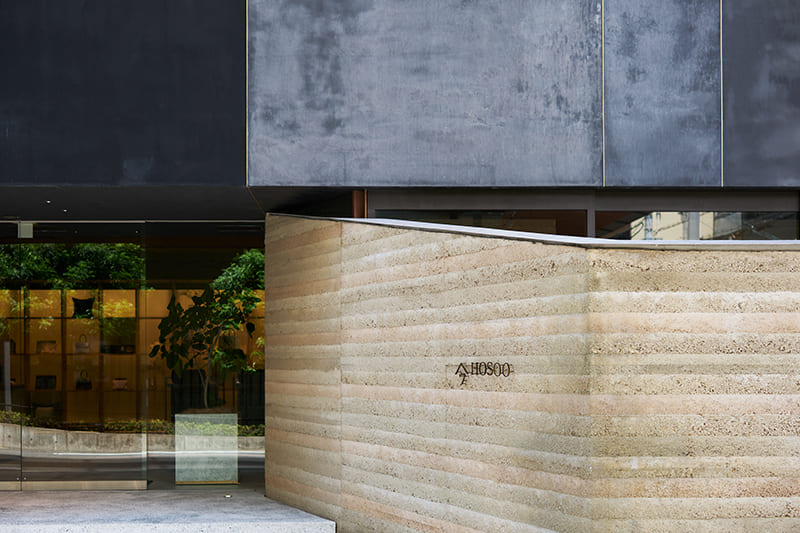
PHOTO: KOUTARO WASHIZAKI
HOSOO
Hosoo was founded in 1688 in the Nishijin area of Kyoto as a producer of Nishijin textiles for the imperial court, shoguns, shrines, temples and more. Since 1923, the company has also been engaged in the wholesale of obis and kimonos from around Japan. In 2019, the Hosoo Flagship Store opened in Kyoto’s Karasuma-Oike area. In 2020, Masataka Hosoo became president. In 2023, Hosoo Tokyo opened in Yaesu Midtown, adjacent to Tokyo Station. https://www.hosoo.co.jp
京都・西陣織の技が伝統工芸「織物」を変える。
この40年間できもの市場が大幅に縮小するなか、西陣織の企業〈細尾〉は世界的な高級ブランドとのコラボレーションなど、きもの以外の“出口”を見出している。躍進のキーマンは細尾真孝だろう。
2008年〈細尾〉に入社した細尾は海外での販路を模索するなか、NYの展示で帯を見た建築家、ピーター・マリノから依頼を受ける。彼が求めてきたのは和柄の織物ではなく、和紙に金銀の箔を接着して作る箔糸を織物にするという西陣独自の技術で、抽象的な柄を織り出すことだった。この注文を受けるために新しく150cm幅の織機を開発。以降、〈細尾〉の海外展開は一気に飛躍し、現在、ハイブランドの店舗やホテルの内装に同社の西陣織が使用されるまでになった。
また、インテリアやファッションの自社ブランドも発表し、ライフスタイルそのものを提案。日本の伝統工芸を軸にもつ世界的トップブランドを目指す。形にとらわれず、美と技にこだわれば、伝統工芸は生き続ける。細尾の取り組みにはそんなメッセージが込められている。
Return to Sustainable Japan Magazine Vol. 40 article list page

